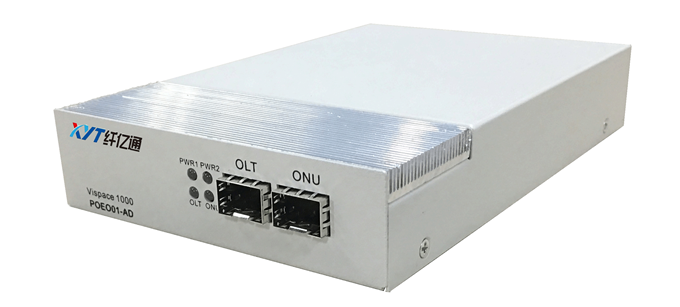 中文
English
中文
English
 中文
English
中文
English
With the continuous reduction of broadband tariffs, fiber-to-home has become more and more popular. In the fiber-to-the-home FTTH optical transmission system, how to extend the distance between the OLT of the operator's equipment room and the ONU of the terminal user's receiving equipment has become a problem that plagues operators and fiber-to-the-home engineers. Today we will discuss how to effectively solve this problem.
In order to improve the distance between the OLT of the central office device and the ONU of the receiving device of the terminal user, the carrier and the engineering manufacturer generally purchase a PON optical module with relatively strong reflective power. However, the effect of PON optical module is not obvious because it can improve the power space relatively small. Moreover, the current scheme has a relatively low utilization rate for the OLT. For example, an EPON port can theoretically carry 64 ONUs. However, in actual use, 32 ONUs are often used due to factors such as large line loss and limited ONU light collection.
As a one-stop solution service provider for optical communication, the PON telescopic amplifier developed by Sharetop, integrates PON technology and photoelectric conversion technology, which can solve the problems of large line loss and near transmission distance in the actual deployment of PON. Achieve PON wide coverage.
PON telescopic amplifier is a PON link amplifier independently developed by Sharetop. It conforms to ITU-T G.984.X and IEEE802.3ah standards, and incorporates PON technology and photoelectric conversion technology to realize PON signal extension and maximum transmission. GPON/60KM, EPON/40KM coverage; fully adapted to the mainstream OLP/ONU equipment in the market, suitable for PON coverage distance extension, large line loss scenarios, no configuration, full transparent transmission, fast opening, and improved FTTH service coverage efficiency.

Figure 1 PON telescopic amplifier
Features:
Ø Support IEEE802.3ah, ITU-T G.984.X and national standard (YD/T 1475-2006)Ø
Ø Transparent protocol, low latency, good compatibility, fully compatible with mainstream OLT/ONU devicesØ
Ø Compatible with G/EPON services, maximum distance EPON/40KM, GPON/60KMØ
Ø Products have 3R function, support multi-level PON service amplification, optical modules support hot swapØ
Ø It can effectively improve the utilization of OLT ports, and can increase the maximum splitting of EPON from 1:32 to 1:64. The maximum splitting of GPON is increased from 1:64 to 1:128.
Practical solution example
Solution 1: Single-stage PON tele-amplification
In the bustling area where there are many users, the PON remote amplifier is added to the fiber link between the OLT and the ONU, and the service coverage is realized by pulling out the single-way PON.

Figure 2 PON remote amplifier is located between the OLT and the ODN application architecture
The PON remote amplifier is deployed between the OLT and the optical splitter to increase the optical power budget of the backbone, as shown in Figure 2. The PON remote amplifier is deployed on the trunk, so the power budget of the entire ODN is improved.

Figure 3 PON remote amplifier is located between the ODN and ODN application architecture
The PON remote amplifier is deployed between the splitter for extension and expansion of the branch, as shown in Figure 3. When the ODN coverage changes, the PON remote amplifier can be used to extend the transmission distance and the split ratio.
Solution 2: Multi-level PON tele-amplification
In the bustling area where there are many users, the PON remote amplifier is added to the fiber link between the OLT and the ONU, and the service coverage is realized by multi-way PON extension.

Figure 4 PON remote amplifier is located between the OLT and ODN or ODN and ODN application architecture
The PON remote amplifier is deployed between the OLT and the optical splitter or between the ODN and the ODN to improve the optical power and transmission distance of the line, improve the utilization of the PON port (split ratio), and extend and expand the branch.
